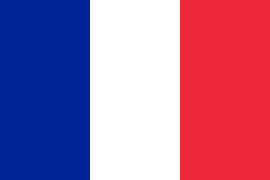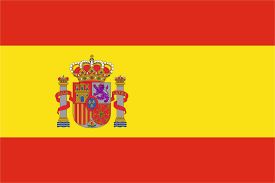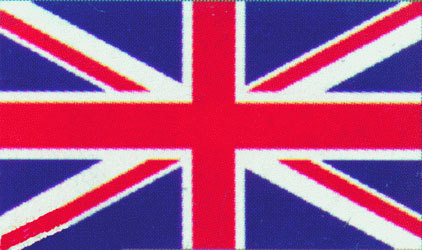La géocache ne se trouve pas dans les coordonnées indiquées. Pour trouver les coordonnées finales, vous devrez trouver quelques données en visitant les différents waypoints ci-joints.
El geocaché no se encuentra en las coordenas listadas. Para hallar las coordenadas finales tendrás que averiguar unos datos visitando los distintos waypoints adjuntos.
The geocache is not in the coordinates given. To find the final coordinates, you will need to find some data by visiting the various attached waypoints.


(En español más abajo) (In English below)
WP coordonnées initiales (a):
Bâtiment Louis Boutan
Fondé en 1882 par le zoologiste français Henri de Lacaze-Duthiers, l’Observatoire Océanologique de Banyuls-sur-Mer (OOB), plus connu sous le nom de « Laboratoire Arago », est placé sous la tutelle conjointe de Sorbonne Université et du Centre National de la Recherche Scientifique.
Avec une localisation exceptionnelle, d'une grande richesse en biodiversité terrestre et marine, et la réunion d'une palette très large de compétences scientifiques et techniques hébergées dans ses infrastructures, l'OOB est parfaitement positionné pour être un acteur important de l'océanographie, de l'écologie et de la biologie marine. Le but de ces recherches est de mieux comprendre le fonctionnement des écosystèmes marins littoraux, côtiers ou hauturiers, et la biologie des organismes qui les habitent afin de cerner les menaces qui pèsent sur eux, de décrypter la façon dont les organismes marins s'adaptent à leur milieu et aux changements liés à l'activité humaine, et d'analyser les conditions d’une exploitation durable de la biodiversité marine.
Depuis sa création, l’Observatoire est un centre d’expérimentation, de formation et de diffusion des connaissances scientifiques accueillant tous les ans de nombreux étudiants et chercheurs du monde entier.
Devant l'entrée principale du bâtiment, vous verrez la sculpture d'une voile de bateau. Quelle année est indiquée dessus? Cette année-là sera l'inconnu "a".
WP1 (b):
Le Biodiversarium présent la biodiversité marine des Pyrénées-Orientales.
A la fois centre de culture scientifique, écomusée et aquarium, le Biodiversarium constitue, en tant que service de médiation scientifique de l'Observatoire Océanologique de Banyuls-sur-Mer, un lieu d'échanges entre le public, les scolaires et le monde de la recherche.
Combien y a-t-il de lampadaires à moins d'un mètre de la façade du Biodiversarium? Ce nombre sera le "b" inconnu.
WP2 (c):
Centre d'Hébergement de l’Observatoire de Banyuls sur Mer, pour chercheurs en océanologie de l’Université Pierre et Marie Curie.
Quelle année apparaît sur la plaque d'entrée? Cette année-là sera le "c" inconnu.
WP3 (d):
Le monument aux morts de Banyuls-sur-Mer est un monument aux morts créé par le sculpteur français Aristide Maillol.
Dédié aux morts de guerre pour la France à Banyuls-Sur-Mer.
C'était son emplacement d'origine, sur l'Illa Grossa, mais le monument a été déplacé en 1989 pour le protéger des éléments et remplacé par une copie en bronze.
L'Illa Grossa est un promontoire rocheux, ancienne île reliée au continent par une digue et accessible par un chemin piétonnier passant devant le laboratoire Arago. De ce lieu une vue panoramique s'étend sur la baie de la ville d'une part, et d'autre part sur la côte rocheuse sauvage où débute la réserve naturelle nationale de Cerbère-Banyuls. C'est là que Maillol a décidé d'installer son monument.
Au pied du monument, vous verrez une plaque avec deux ans. Ne regardez que la première année. Additionnez leurs chiffres les uns aux autres. Le nombre résultant sera le "d" inconnu.
WP4 (e):
Bâtiments H. de Lacaze Duthiers et E. Chatton
Aux coordonnées, vous verrez une «tour» de quatre étages du bâtiment du laboratoire Aragó. Combien de fenêtres y a-t-il sur la façade nord-ouest de ladite tour? Ce nombre sera le "e" inconnu.
Résolution
Remplacez les inconnues de cette formule par les données obtenues. Et vous vérifiez dans le géocheck en fin d'annonce si c'est la bonne coordonnée.
N 42 28.8(c-a)(d-e) E 003 08.2b(c-a)

WP coordenadas iniciales (a):
Edificio Louis Boutan
Fundado en 1882 por el zoólogo francés Henri de Lacaze-Duthiers, el Observatorio Oceanológico de Banyuls-sur-Mer (OOB), más conocido con el nombre de "Laboratoire Arago", está bajo la supervisión conjunta de la Universidad de la Sorbona y el Centro Nacional. para la Investigación Científica (CNRS).
Con una ubicación excepcional, en particular una gran biodiversidad terrestre y marina, y la presencia de una amplia gama de habilidades científicas y técnicas alojadas en sus infraestructuras, la OOB está perfectamente posicionada para ser un actor importante en oceanografía, ecología y biología marina. El objetivo de esta investigación es comprender mejor el funcionamiento de los ecosistemas marinos costeros o marinos y la biología de los organismos que los habitan con los objetivos de identificar las amenazas a los mismos, descifrar cómo los organismos marinos se adaptan a su medio y a los cambios provocados por la actividad de los humanos y analizar las condiciones para la explotación sostenible de la biodiversidad marina.
Desde su creación, el Observatorio ha sido un centro de experimentación, formación y difusión del conocimiento científico, acogiendo a numerosos estudiantes e investigadores de todo el mundo.
Frente a la entrada principal del edificio verás la escultura de una vela de embarcación. ¿Qué año figura en ella? Ese año será la incógnita “a”.
WP1 (b):
El Biodiversarium presenta la biodiversidad marina de los Pirineos Orientales.
El Biodiversarium es un centro de cultura científica, un ecomuseo y un acuario. Como servicio de mediación científica del Observatorio Oceanológico de Banyuls-sur-Mer, es un lugar de intercambio entre el público, las escuelas y el mundo de la investigación.
¿Cuántas farolas hay a menos de un metro de la fachada del Biodiversarium? Ese número será la incógnita “b”.
WP2 (c):
Centro de Alojamiento del Observatorio Banyuls sur Mer, para científicos oceánicos de la Universidad Pierre y Marie Curie.
¿Qué año aparece en la placa de la entrada? Ese año será la incógnita “c”.
WP3 (d):
El monument aux morts de Banyuls-sur-Mer es un monumento a los muertos creado por el escultor francés Aristide Maillol.
Dedicado a los muertos en guerra por Francia en Banyuls-Sur-Mer.
Esta fue su ubicación original, en la Illa Grossa, pero el monumento fue trasladado en 1989 para protegerlo de los elementos y reemplazado por una copia de bronce.
Illa Grossa es un promontorio rocoso, una antigua isla unida al continente por un dique y accesible por un sendero que pasa frente al laboratorio Arago. Desde este lugar se extiende una vista panorámica sobre la bahía de la ciudad por un lado, y por otro lado sobre la costa rocosa salvaje donde comienza la reserva natural nacional de Cerbère-Banyuls. Aquí es donde Maillol decidió instalar su monumento.
A los pies del monumento verás una placa con dos años. Fíjate solo en el primer año. Suma sus dígitos entre sí. El número resultante será la incógnita “d”.
WP4 (e):
Edificios H. de Lacaze Duthiers y E. Chatton
En las coordenadas verás una “torre” de cuatro alturas del edificio del Laboratorio Aragó. En la fachada noroeste de dicha torre ¿cuántas ventanas hay? Ese número será la incógnita “e”.
Resolución
Sustituye las incógnitas de esta fórmula con los datos obtenidos. Y comprueba en el geocheck que hay al final del listing si es la coordenada correcta.
N 42 28.8(c-a)(d-e) E 003 08.2b(c-a)

WP initial coordinates (a):
Louis Boutan building
Founded in 1882 by the French zoologist Henri de Lacaze-Duthiers, the Oceanological Observatory of Banyuls-sur-Mer (OOB), better known under the name of "Laboratoire Arago", is placed under the joint supervision of Sorbonne University and the National Center for Scientific Research (CNRS).
With an exceptional location, in particular a great terrestrial and marine biodiversity, and the presence of a wide range of scientific and technical skills housed in its infrastructures, the OOB is perfectly positioned to be an important player in oceanography, ecology and marine biology. The goal of this research is to better understand the functioning of coastal or offshore marine ecosystems and the biology of the organisms that inhabit them with the objectives of identify threats to them, decipher how marine organisms adapt to their environment and to the changes caused by human activities, analyze the conditions for sustainable exploitation of marine biodiversity.
Since its creation, the Observatory has been a center for experimentation, training and dissemination of scientific knowledge, welcoming many students and researchers from all over the world.
In front of the main entrance of the building you will see the sculpture of a boat sail. What year is on it? That year will be the unknown "a".
WP1 (b):
The Biodiversarium presents the marine biodiversity of the Pyrénées-Orientales.
Both a center of scientific culture, an ecomuseum and an aquarium, the Biodiversarium constitutes, as a scientific mediation service of the Oceanological Observatory of Banyuls-sur-Mer, a place of exchange between the public, schoolchildren and the world of the research.
How many streetlights are there less than one meter from the facade of the Biodiversarium? That number will be the unknown "b".
WP2 (c):
Banyuls sur Mer Observatory Accommodation Center, for ocean scientists from Pierre and Marie Curie University.
What year appears on the entrance plate? That year will be the unknown "c".
WP3 (d):
The monument aux morts de Banyuls-sur-Mer is a monument to the dead created by the French sculptor Aristide Maillol.
Dedicated to the war dead for France in Banyuls-Sur-Mer.
This was its original location, on the Illa Grossa, but the monument was moved in 1989 to protect it from the elements and replaced with a bronze copy.
Illa Grossa is a rocky promontory, an ancient island linked to the mainland by a dike and accessible by a path that passes in front of the Arago laboratory. From this place a panoramic view extends over the bay of the city on one side, and on the other side over the wild rocky coast where the Cerbère-Banyuls national nature reserve begins. This is where Maillol decided to install his monument.
At the foot of the monument you will see a plaque with two years. Look only at the first year. Add their digits to each other. The resulting number will be the unknown "d".
WP4 (e):
H. de Lacaze Duthiers and E. Chatton buildings.
At the coordinates you will see a four-storey “tower” of the Aragó Laboratory building. How many windows are there on the northwest façade of said tower? That number will be the unknown "e".
Resolution
Replace the unknowns in this formula with the data obtained. And you check in the geocheck at the end of the listing if it is the correct coordinate.
N 42 28.8(c-a)(d-e) E 003 08.2b(c-a)
